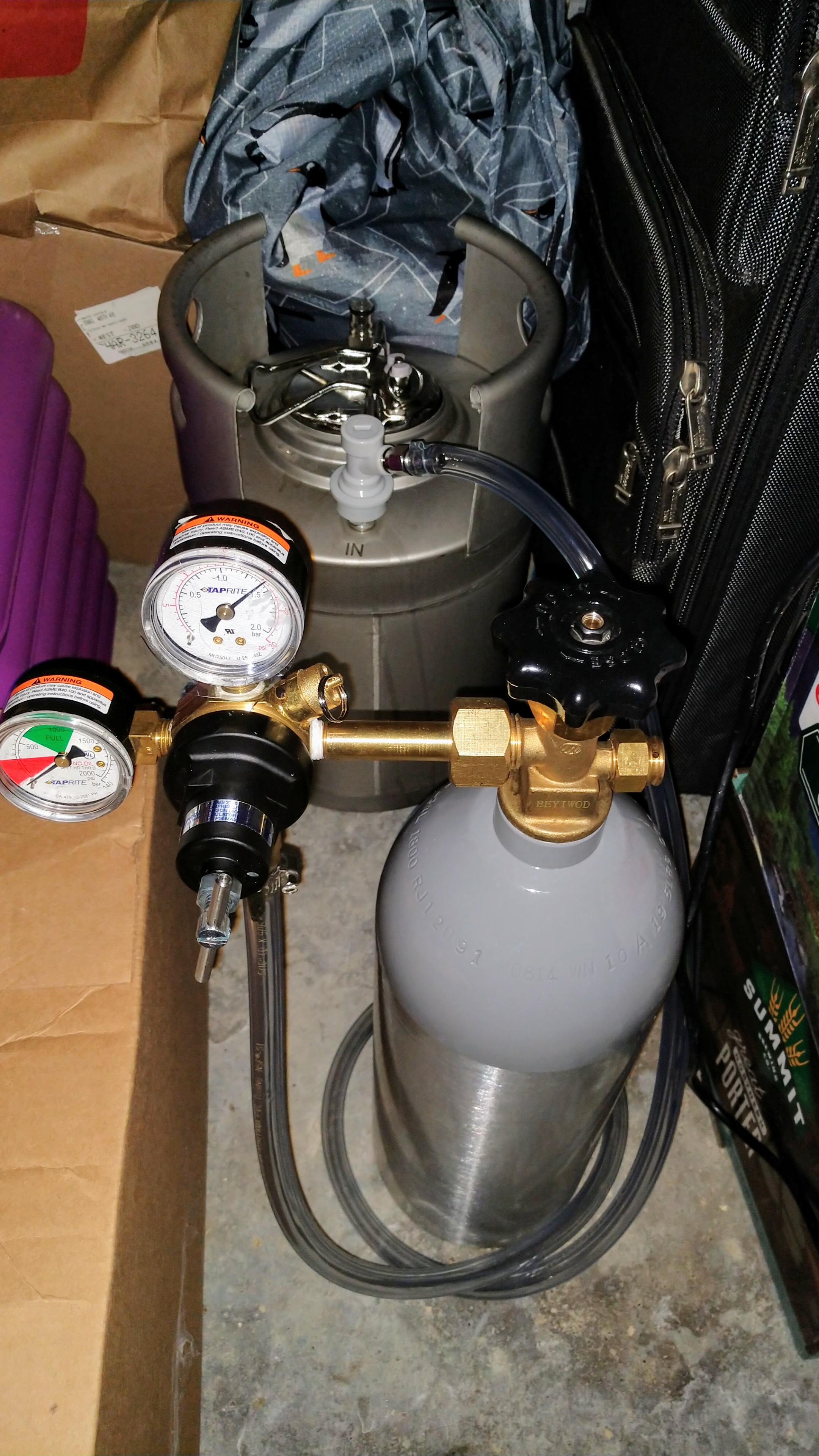First time ever kegging a beer. I have a 2.5 gallon so I kegged half and bottled half. Bottles were primed with the Domino dots sugar cubes. Excited to see what the difference will be like between the two and how the dots priming turns out.




There are many threads here on hbt confirming this exact question. I personally have not used sugar cubes, but I believe the concensus is that it takes a little longer than with corn sugar. But it's measured by days. Be patient and you will be rewarded.I’d be interested to know if table sugar cubes work well or not.
I really like this 2.5 torpedo. Was able to easily put it in the back seat. Fits in regular fridge with shelf on lowest level and still leaves some for bottles.Kind of off-topic...but aren't those 2.5 gallon kegs so cute?!










12oz glass bottles, one dominos dot sugar cube fits right through the mouth.I have a very similar setup and do a lot of keg half/bottle half. I’ve been using the carbonation drops lately. Takes a little longer to carb than corn sugar and the bubbles are finer. I’d be interested to know if table sugar cubes work well or not. What size are your bottles?
I carb kegs at room temp all the time. You just need to chill it if you want it carbed faster and with less pressure required.congrats, hate to ask this question but do you have the keg in the fridge?
needs to be cold to carb.
Right on the less pressure required but carbonation takes longer (up to twice as long going from 20°C to 0°C) the colder the beer.I carb kegs at room temp all the time. You just need to chill it if you want it carbed faster and with less pressure required.
Looks like your bottle of CO2 is either empty or you forgot to open the shutoff valve?First time ever kegging a beer. I have a 2.5 gallon so I kegged half and bottled half. Bottles were primed with the Domino dots sugar cubes. Excited to see what the difference will be like between the two and how the dots priming turns out.
Looks like your bottle of CO2 is either empty or you forgot to open the shutoff valve?
If you are saying it takes longer to carb a chilled keg, that runs opposite of my experience. A room temp keg takes about twice as long to carb as the same keg using less pressure in the fridge. I may be reading you wrong...Right on the less pressure required but carbonation takes longer (up to twice as long going from 20°C to 0°C) the colder the beer.
it has been my experience that a colder keg carbs faster - even with the lower chart pressure for the temp. That comes from carbing 2.5 gal kegs. Not sure if the volume plays a role in the rate or not.Mostly right: with the "chart pressure" appropriate for the temperature the rate of carbonation gain should be the same...
Cheers!
The surface-to-volume ratio plays a role. Of course if you force carb two identical kegs filled to nominal capacity the ratio will be identical and the warmer keg, set to the appropriate higher pressure, will carb faster than the colder one.it has been my experience that a colder keg carbs faster - even with the lower chart pressure for the temp. That comes from carbing 2.5 gal kegs. Not sure if the volume plays a role in the rate or not.
The lower the temperature, the more quickly CO2 dissolves into your homebrew
Then you shouldn't, especially in this case...i hate to jump over posts, ...
Then you shouldn't, especially in this case...
The only problem is that if you're targeting the same final carbonation level you have to set the correspondingly higher pressure for the warmer beer as per the carbonation chart, otherwise your warm beer will never ever reach the desired carbonation level no matter how long you wait. The situation you describe would lead to the warmer keg being extremely undercarbed so your consideration is meaningless in practical applications.Some important factors when thinking about carbonating beer in a cornelius keg are as follows:
In the beginning there is negligible CO2 dissolved in the beer.
In two closed systems where the factor being compared is temperature we could consider that in the warmer system there will be a lower concentration of CO2 in the headspace at the beginning because gas at a warmer temperature exerts a higher pressure.
In the second, cooler system, there is a higher concentration of CO2 at identical pressure in the headspace, simply because gas at a cooler temperature exerts a lower pressure, so more CO2 is required to be present to exert the same pressure.
In reality, chilled kegs of beer carbonate faster than warm because the amount of CO2 in the cold keg headspace is greater. I believe this to be the overriding cause of our observations in keg systems where gas to liquid surface ratio is small, and liquid to gas volume is high.
I had shut the tank valve off because I was curious if anything was leaking plus wanted to see how much co2 it would take the first 24 hours.Looks like your bottle of CO2 is either empty or you forgot to open the shutoff valve?
No more personal attacks.
